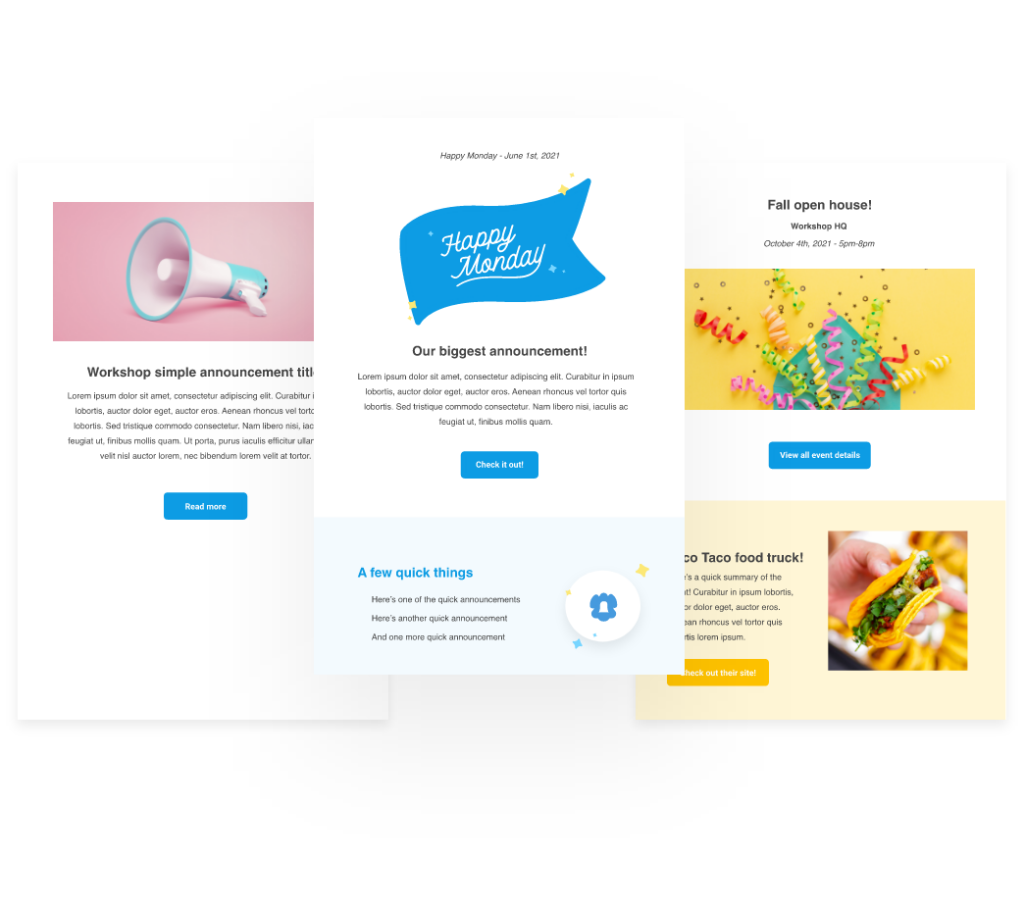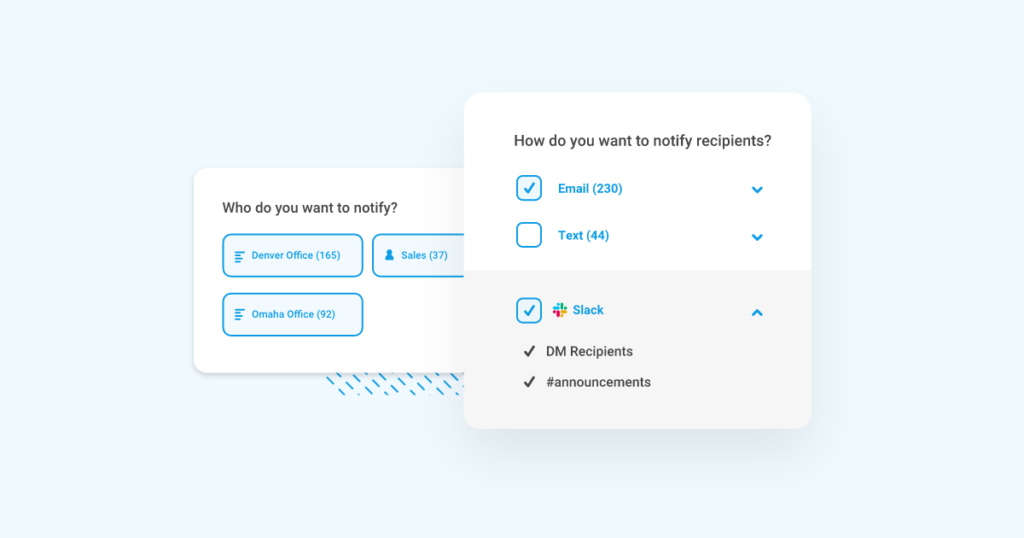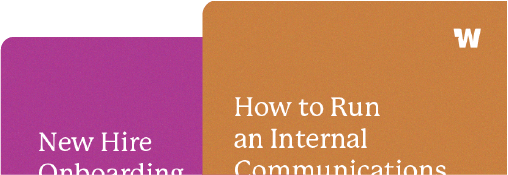How to improve communications in healthcare (& make it more effective)

When it comes to internal communication, health care facilities and hospitals face a pretty intense set of challenges. Communicating with doctors, nurses, and medical staff is really difficult; they’re incredibly busy, often handling urgent patient needs, and they’re rarely at their desk to check email.
On top of that, the healthcare industry still overwhelmingly relies on outdated forms of communication to reach their staff. Here, we’ll explore a few of the main issues with communications in healthcare organizations, and offer a few ideas for tackling them.
1.) Go beyond emails
Because staff isn’t sitting at their desk or regularly checking emails, it’s important to diversify the channels you’re using to communicate with your employees. (In particular, the healthcare industry is known for its poor open and click through rates for internal emails.) If you’re sending an email with a link to important information or updates, the odds are that its being overlooked by the majority of your employees.
This is a major reason why we recommend embracing the piece of technology they have with them at all times: their cell phone.

In a report by Spyglass Consulting Group, 67 percent of hospitals say their nurses are using their mobile phones to support clinical communication already. However, of the 53 percent of hospitals that currently have “bring your own device” programs (which allow staff to use their personal phones for professional use), only 11 percent go as far as to include their nursing staff…which means these tools don’t benefit the entirety of the organization and can’t be used for all-company notifications.
Opting for an an all-inclusive communications platform that gives you the ability to reach your both your full medical and administrative staff with text messages is a much more efficient way to decrease communication problems in hospitals.
Outside of using email and text messages, many hospitals and health care organizations also choose to use printed materials to support their internal communications efforts (like posters and flyers). Though manual, this can be a good way to put important messages front and center while your staff is doing rounds.
2.) Update your communications tools
This Ponemon Institute study brought to light how serious of a problem it was to use outdated tools for internal communications…and it was published eight years ago. The study found that inefficient communication costs the average hospital $1.7 million a year.
In addition, clinicians waste an average of more than 45 minutes each day due to the use of outdated communication technologies. The primary reason is the inefficiency of pagers (as cited by 52 percent of survey respondents), followed by the lack of Wi-Fi availability (39 percent), the inadequacy of email (38 percent) and the inability to use text messaging (36 percent).
The solution is in finding the right tool for the job. When it comes to internal communications with healthcare professionals, your messages need to be as efficient and time-sensitive as possible. When they’re urgent, it needs to be incredibly easy to get the message out as fast as possible; when they’re not urgent, you need a place for those messages to be easily discoverable.
All of the above demonstrate one of our absolute favorite use cases for Workshop. Our communications tool offers healthcare orgs everything they need in one place: you can send text notifications, segment messages by different departments and units, and give your on-the-go staff an engaging newsletter that catches them up on the week or month’s news. Plus, it’s super easy to create professional, efficient messages in minutes (no design skills required).

Get a demo of Workshop here!
Investing in a user-friendly tool like Workshop also allows communicators to track click and open rates (per employee!), which provides useful data about the stories your organization actually reads. You’ll have the analytics to show exactly what your employees are engaging with, so going forward, you can create even more efficient communications.
And as far as security and privacy concerns go, patient health information isn’t meant to be shared via Workshop. Plus, we configure SSO for user security, which adds an additional layer of authentication to ensure the people who are reading the updates are the people who are supposed to be reading the updates.
3.) Have a plan for crisis communications
Hospitals and healthcare organizations deal with urgent situations and medical emergencies every day, and having the systems and processes in place to handle them is absolutely crucial.
That same approach should be applied to internal communications. Having a crisis communication plan in place that your employees understand, and one that can be easily adapted to different situations, is completely essential for communicators in the hospital and healthcare industry. (Here’s a free template!) This includes having right channels (that means not just email!) in order to keep people informed, especially when a situation can escalate really quickly.
Many hospitals and healthcare organizations have adopted mass notification and/or alerting software systems specifically designed for emergency situations. These kinds of tools can take over desktops, screens, smartphones, and tablets for true emergencies, like mass traumas or terrorist threats.
Workshop isn’t a replacement for that kind of system, but it can work similarly for non-emergency situations, like weather alerts, construction updates, or outages. It’s also an excellent communications tool for improving how information is shared between management and employees, and between different departments.
4.) Try sharing a mix of important and engaging information
Your internal communications shouldn’t just be about the nuts and bolts of your facilities. While building updates or training opportunities are great examples of items to include in newsletters and memos, your messages are also a unique opportunity to share positive moments, reinforce your organization’s values, and inspire them to perform well. When in doubt, look for and publish stories within your organization about patients, employees, and/or healthcare trends.
(Here are 20 ideas for a more engaging employee newsletter to browse!)
Not only will you see your open rates improve, but this kind of information sharing can also help you boost employee engagement, improve morale, and, down the line, even enhance patient satisfaction.

5.) Segment your messages — every time
With the right internal communications software, messages can be sent to the entire organization, or just targeted to specific audiences. For example: surgical staff only, or the entire cardiac care unit. This means the most relevant information is shared with those who need to see it, which avoids people tuning out (and ultimately not reading) your updates.
At the end of the day, employees need clear information, not simply more information. Communicators need to exercise control and restraint over everything that is shared internally. Guard the “All Company” email list; after all, only the most important content should be sent to the entire staff. (We’ve all been on a reply-all chain that was out of control, right?!)
This is tough to put into practice. To do so, communicators have to get comfortable pushing back on frequent all-company updates, and/or more intentionally selecting the audience for a particular message.

On the flip side, leadership needs to trust healthcare communications professionals to be able to make these distinctions, and need to recognize their role as a thoughtful protector of their employees’ bandwidth (and time).
If you’re in health care, what communications strategies have worked best for you? Share below!
See how Workshop can help streamline the internal communications at your health care organization here.







